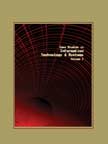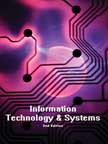Information Technology & Systems
 |
Details
Textbook Edition: II
Pages : 490;
Paperback;
210 X 275 mm approx.
Detail Table of Contents
Workbook Edition: II
Pages : 231; Paperback;
210 X 275 mm approx.
Pricing
Textbook Price: Rs. 900;
Workbook Price: Rs. 700;
Available only in INDIA
Fundamentals of Information Systems : Chapter 3
SUMMARY: Information is data that has been processed into a form that is meaningful to the user. An information system (IS) is an organized combination of people, hardware, software, communications network, and data resources that collects, transforms and disseminates information in an organization. Information systems and technologies have become a vital component of businesses and organizations. People rely on information systems to communicate with each other using a variety of physical devices (hardware), information processing instructions and procedures (software), communication channels (networks), and stored data (data resources). Information can be classified into facts, opinions, concepts, procedures, processes, principles, primary information, and secondary information. Apart from this, it can also be classified into several types based on its nature, usage, creation, application, structure, and form. |
|
In order to present the information in a proper manner to the user, the data can be collected through two main methods - primary and secondary.
Primary data collection refers to collecting original data or collecting data directly from the source. Secondary data collection refers to collecting data from secondary sources such as books, journals, research reports, online databases, Internet, etc. The user should check whether this data has been updated before analyzing the data and drawing conclusions.
|
The transmission of information between one person and another, takes place with
the help of the communications system. Summarization and message routing are the
two methods that increase the sending and receiving efficiency of the system.
|
Some of the important activities performed by an IS are processing of data into information, storage of data resources and control of system performance. Information systems perform three vital roles in any type of organization. They support business operations, support managerial decision- making, and provide strategic competitive advantage to the organization. Information systems are classified into different classes according to their use in a business.
Related Books:-
 Case Studies in IT and Systems
Case Studies in IT and Systems
263 pages, Paperback
Available only in INDIA

